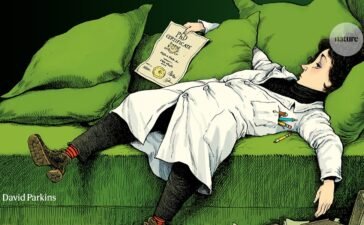Dunn, J., Runge, R. & Snyder, M. Wearables and the medical revolution. Per Med. 15, 429–448 (2018).
Yetisen, A. K., Martinez‐Hurtado, J. L., Ünal, B., Khademhosseini, A. & Butt, H. Wearables in medicine. Adv. Mater. 30, e1706910 (2018).
Martin, T., Jovanov, E. & Raskovic, D. Issues in wearable computing for medical monitoring applications: a case study of a wearable ECG monitoring device. In Digest of Papers. Fourth International Symposium on Wearable Computers 43–49 (IEEE Computer Society, 2000).
Kim, D.-H. et al. Epidermal electronics. Science 333, 838–843 (2011).
Liu, Y., Pharr, M. & Salvatore, G. A. Lab-on-skin: a review of flexible and stretchable electronics for wearable health monitoring. ACS Nano 11, 9614–9635 (2017).
Yang, G.-Z., Andreu-Perez, J., Hu, X. & Thiemjarus, S. in Body Sensor Networks (ed. Yang, G.-Z.) 301–354 (Springer, 2014).
Muzammal, M., Talat, R., Sodhro, A. H. & Pirbhulal, S. A multi-sensor data fusion enabled ensemble approach for medical data from body sensor networks. Inf. Fusion 53, 155–164 (2020).
Gravina, R., Alinia, P., Ghasemzadeh, H. & Fortino, G. Multi-sensor fusion in body sensor networks: state-of-the-art and research challenges. Inf. Fusion 35, 68–80 (2017).
Tamura, T., Maeda, Y., Sekine, M. & Yoshida, M. Wearable photoplethysmographic sensors—past and present. Electronics (Basel) 3, 282–302 (2014).
Mathie, M. J., Coster, A. C. F., Lovell, N. H. & Celler, B. G. Accelerometry: providing an integrated, practical method for long-term, ambulatory monitoring of human movement. Physiol. Meas. 25, R1–R20 (2004).
Wicaksono, I. et al. A tailored, electronic textile conformable suit for large-scale spatiotemporal physiological sensing in vivo. npj Flexible Electron. 4, 5 (2020).
Shi, J. et al. Smart textile‐integrated microelectronic systems for wearable applications. Adv. Mater. 32, e1901958 (2020).
Chen, G. et al. Electronic textiles for wearable point-of-care systems. Chem. Rev. 122, 3259–3291 (2022).
Yan, W. et al. Advanced multimaterial electronic and optoelectronic fibers and textiles. Adv. Mater. 31, e1802348 (2019).
Yan, W. et al. Thermally drawn advanced functional fibers: new frontier of flexible electronics. Mater. Today 35, 168–194 (2020).
Bayindir, M., Abouraddy, A. F., Arnold, J., Joannopoulos, J. D. & Fink, Y. Thermal‐sensing fiber devices by multimaterial codrawing. Adv. Mater. 18, 845–849 (2006).
Zhang, T. et al. High-performance, flexible, and ultralong crystalline thermoelectric fibers. Nano Energy 41, 35–42 (2017).
Yan, W. et al. Single fibre enables acoustic fabrics via nanometre-scale vibrations. Nature 603, 616–623 (2022).
Gumennik, A. et al. All‐in‐fiber chemical sensing. Adv. Mater. 24, 6005–6009 (2012).
Pan, Z. et al. All-in-one stretchable coaxial-fiber strain sensor integrated with high-performing supercapacitor. Energy Storage Mater. 25, 124–130 (2020).
Qu, Y. et al. Superelastic multimaterial electronic and photonic fibers and devices via thermal drawing. Adv. Mater. 30, e1707251 (2018).
Xiong, T. et al. Photo-powered all-in-one energy harvesting and storage fibers towards low-carbon smart wearables. Energy Storage Mater. 65, 103146 (2024).
Khudiyev, T. et al. Thermally drawn rechargeable battery fiber enables pervasive power. Mater. Today 52, 80–89 (2022).
Dong, C. et al. High-efficiency super-elastic liquid metal based triboelectric fibers and textiles. Nat. Commun. 11, 3537 (2020).
Shi, X. et al. Large-area display textiles integrated with functional systems. Nature 591, 240–245 (2021).
Canales, A. et al. Multifunctional fibers for simultaneous optical, electrical and chemical interrogation of neural circuits in vivo. Nat. Biotechnol. 33, 277–284 (2015).
Hwang, S. et al. Integration of multiple electronic components on a microfibre towards an emerging electronic textile platform. Nat. Commun. 13, 3173 (2022).
Rein, M. et al. Diode fibres for fabric-based optical communications. Nature 560, 214–218 (2018).
Danto, S., Ruff, Z., Wang, Z., Joannopoulos, J. D. & Fink, Y. Ovonic memory switching in multimaterial fibers. Adv. Funct. Mater. 21, 1095–1101 (2011).
Danto, S. et al. Fiber field‐effect device via in situ channel crystallization. Adv. Mater. 22, 4162–4166 (2010).
Loke, G. et al. Digital electronics in fibres enable fabric-based machine-learning inference. Nat. Commun. 12, 1–9 (2021).
Wang, Z. et al. High-quality semiconductor fibres via mechanical design. Nature 626, 72–78 (2024).
Agcayazi, T., Chatterjee, K., Bozkurt, A. & Ghosh, T. K. Flexible interconnects for electronic textiles. Adv. Mater. Technol. 3, 1700277 (2018).
Stanley, J., Hunt, J. A., Kunovski, P. & Wei, Y. A review of connectors and joining technologies for electronic textiles. Eng. Rep. 4, e12491 (2022).
Marion, J. S. et al. Thermally drawn highly conductive fibers with controlled elasticity. Adv. Mater. 34, e2201081 (2022).
Poincloux, S., Adda-Bedia, M. & Lechenault, F. Geometry and elasticity of a knitted fabric. Phys. Rev. X 8, 021075 (2018).
Chen, S. et al. Exploring the relationship between applied fabric strain and resultant local yarn strain within the elastic fabric based on finite element method. J. Mater. Sci. 55, 10258–10270 (2020).
Morton, W. E. & Hearle, J. W. S. Physical Properties of Textile Fibres (Woodhead Publishing, 2008).
Iqbal, W., Jiang, Y., Qi, Y. & Xu, L. Yarn damage evaluation in the flat knitting process. AUTEX Res. J. 21, 272–283 (2021).
Boussu, F., Trifigny, N., Cochrane, C. & Koncar, V. in Smart Textiles and Their Applications 375–400 (Elsevier, 2016).
Brunnschweiler, D. The structure and tensile properties of braids. J. Text. Inst. Trans. 45, T55–T77 (1954).
Rawal, A., Saraswat, H. & Kumar, R. Tensile response of tubular braids with an elastic core. Composites, Part A: Appl. Sci. Manuf. 47, 150–155 (2013).
Siitonen, S., Laakkonen, P., Vahimaa, P., Kuittinen, M. & Tossavainen, N. White LED light coupling into light guides with diffraction gratings. Appl. Opt. 45, 2623–2630 (2006).
Miller, J. M., de Beaucoudrey, N., Chavel, P., Turunen, J. & Cambril, E. Design and fabrication of binary slanted surface-relief gratings for a planar optical interconnection. Appl. Opt. 36, 5717–5727 (1997).
Cornacchia, M., Ozcan, K., Zheng, Y. & Velipasalar, S. A survey on activity detection and classification using wearable sensors. IEEE Sens. J. 17, 386–403 (2017).
Loke, G. et al. Computing fabrics. Matter 2, 786–788 (2020).
Guo, Y. et al. Polymer composite with carbon nanofibers aligned during thermal drawing as a microelectrode for chronic neural interfaces. ACS Nano 11, 6574–6585 (2017).
Loke, G., Yan, W., Khudiyev, T., Noel, G. & Fink, Y. Recent progress and perspectives of thermally drawn multimaterial fiber electronics. Adv. Mater. 32, e1904911 (2020).
Branscomb, D., Beale, D. & Broughton, R. New directions in braiding. J. Eng. Fibers Fabr. 8, 11–24 (2013).
Lalitha, V. & Srinivasan, K. A review of Manchester, Miller, and FM0 encoding techniques. Smart Comput. Rev. 4, 481–490 (2014).
Yurtman, A. & Barshan, B. Activity recognition invariant to sensor orientation with wearable motion sensors. Sensors 17, 1838 (2017).
Gupta, N., Cheung, H. & Payra, S. Fibre Computer Repository. Zenodo https://doi.org/10.5281/zenodo.13874664 (2025).
You Might Also Like
The Nature Podcast highlights of 2025
You have full access to this article via your institution. Download the Nature Podcast 24 December 2025In this episode:00:40 What...
Seeding opportunities for Black atmospheric scientists
Vernon Morris (outlined) with alumni from the atmospheric sciences PhD programme he established at Howard University in Washington DC.Credit: Vernon...
peer reviews created using AI can avoid detection
The difficulty of detecting AI-tool use in peer review is proving problematic.Credit: BrianAJackson/iStock via GettyIt’s almost impossible to know whether...
I’ve earned my PhD — what now?
Illustration: David ParkinsThe problemDear Nature,In December 2024, I finished my PhD in biomedical chemistry in Italy, and I now find...










